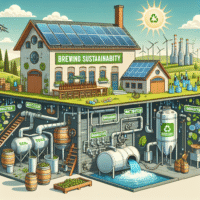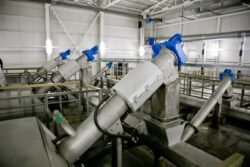What Are PFAS: A Deep Dive into Per- and Polyfluoroalkyl Substances
Introduction
While individuals may not immediately recognize the acronym PFAS, their presence in everyday products is undeniable. Per- and polyfluoroalkyl substances (PFAS) are a group of man-made chemicals that have become a major focus of environmental concern as documentary evidence of their harmful effects emerges. In July 2025, an increasing number of municipalities and industries are grappling with the implications of PFAS on public health and water safety following proactive regulatory frameworks and evolving treatment technologies. This article aims to provide a comprehensive understanding of PFAS, their environmental impacts, health risks, regulatory status, and the latest treatment solutions.
What Are PFAS?
Definition and Characteristics
PFAS refers to a broad class of synthetic chemicals that include thousands of individual compounds. They are characterized by the presence of carbon-fluorine bonds, which grant them unique properties such as water and grease resistance, thermal stability, and oil repellency. These characteristics make PFAS particularly useful in a variety of applications, including:
- Firefighting Foam: Aqueous film-forming foams (AFFF) that include PFAS are employed in emergency firefighting.
- Industrial Processes: Used in coatings, textiles, and various manufacturing processes.
- Consumer Products: Found in non-stick cookware, stain-resistant fabrics, and food packaging.
History and Usage
The production of PFAS began in the 1940s, and their use quickly proliferated in industries across the globe. However, the environmental and health consequences of these compounds began to gain attention in the 1990s. Over the decades, research has revealed their persistence in the environment and ability to bioaccumulate in living organisms.
Why Are PFAS Problematic?
Environmental Persistence
PFAS have been dubbed “forever chemicals” due to their remarkable resistance to breakdown in the environment. Research from the Environmental Protection Agency (EPA) indicates that PFAS compounds can remain in soil and water for decades, leading to widespread contamination. This persistence poses challenges for clean-up efforts and environmental restoration.
Health Risks
Numerous studies link PFAS exposure to several health issues. According to a 2024 industry review, individuals with elevated PFAS levels may experience:
- Increased cholesterol levels: A study published in the Environmental Health Perspectives highlights a correlation between PFAS exposure and elevated cholesterol, posing cardiovascular risks.
- Reproductive and developmental effects: Research indicates potential impacts on fetal development, leading to lower birth weights and developmental delays.
- Immune system interference: Evidence suggests PFAS may exacerbate the immune response, compromising efficacy against certain vaccines.
Regulations and Legislation
As of mid-2025, regulatory frameworks regarding PFAS have been significantly strengthened. The EPA recently published a comprehensive strategy to manage these chemicals, including proposed Maximum Contaminant Levels (MCLs) for certain PFAS, such as PFOA and PFOS, in drinking water. The 2023 National Defense Authorization Act has also mandated the military to phase out PFAS-containing firefighting foams by 2026.
What Are the Common Sources of PFAS?
Water Sources
One of the most concerning pathways for PFAS contamination is through drinking water supplies. A recent survey found that approximately 30% of community water systems nationwide reported detectable levels of PFAS. Contaminations often stem from:
- Industrial Facilities: Discharges from manufacturing plants using PFAS-containing products.
- Landfills: Leaching from waste containing PFAS-laden consumer goods.
Soil Contamination
With the agricultural application of biosolids, PFAS can migrate from wastewater treatment plants into the soil and subsequently enter the food chain.
Consumer Products
Items such as non-stick cookware, water-resistant textiles, and food packaging are significant contributors to PFAS exposure, especially when these products degrade over time.
How to Detect PFAS?
Testing Protocols
Detection of PFAS in water involves specialized laboratory methods, such as:
- Total Oxidizable Precursor Assay (TOP Assay): Estimates the total concentration of PFAS in water samples.
- U.S. EPA Method 537.1: A standardized testing method that can identify and quantify specific PFAS compounds.
Ascertaining Safety Levels
In light of evolving scientific understanding, understanding and implementing safe thresholds for PFAS concentrations in drinking water is critical. The EPA’s proposed MCLs aim to protect public health by minimizing exposure.
Current Treatment Technologies for PFAS
Adsorption
Granular Activated Carbon (GAC): This method involves passing contaminated water through carbon filters which adsorb PFAS molecules effectively. Recent studies show that high-capacity GAC systems can significantly lower PFAS concentrations.
Ion Exchange
This technology utilizes resins that preferentially attract PFAS over other ions. The process effectively removes certain PFAS compounds from drinking water, but careful management of exhausted resins is necessary to avoid re-releasing contaminants.
Advanced Oxidation Processes (AOP)
Utilizing oxidants such as ozone, AOP methods can degrade PFAS compounds into less harmful byproducts. Although the technology is impactful, high operational costs remain a barrier for widespread adoption.
Membrane Technologies
Reverse osmosis and nanofiltration can effectively separate PFAS from water. While these techniques yield high purity levels, the challenge of membrane fouling and high energy costs needs addressing.
Communicating PFAS Risks to the Public
Transparency and Public Awareness
Stakeholders operating in municipalities and industrial sectors must prioritize communicating PFAS risks effectively. This includes:
- Public Information Campaigns: Sharing information on PFAS sources and health implications.
- Community Engagement: Regularly hosting sessions to educate citizens about local water testing and available resources.
Regulatory Compliance and Reporting
Implementing rigorous monitoring and transparent reporting practices can help bolster community trust and safety. Local governments are encouraged to develop and comply with drinking water quality standards consistent with the latest EPA directives.
Conclusion
PFAS represent a pressing environmental and public health challenge. With their widespread usage, potential health risks, and the regulatory landscape continuing to evolve, understanding PFAS is crucial for engineers, policymakers, and the public alike. As new technologies emerge to address PFAS contamination, continuous monitoring, effective communication, and community involvement will be vital to mitigating the risks posed by these “forever chemicals.”
The issue surrounding PFAS is complex, and as professionals in environmental engineering and water treatment, it is essential to remain informed and proactive in developing solutions that ensure safe drinking water for all.
source https://www.waterandwastewater.com/what-are-pfas/


